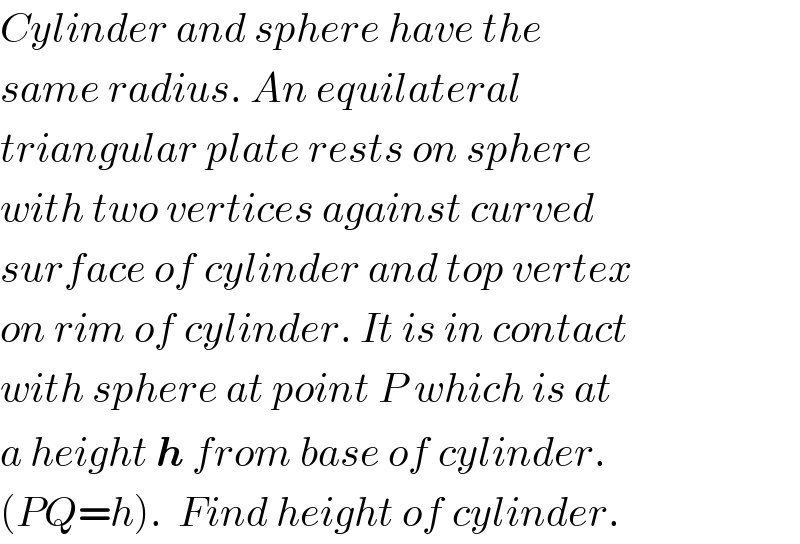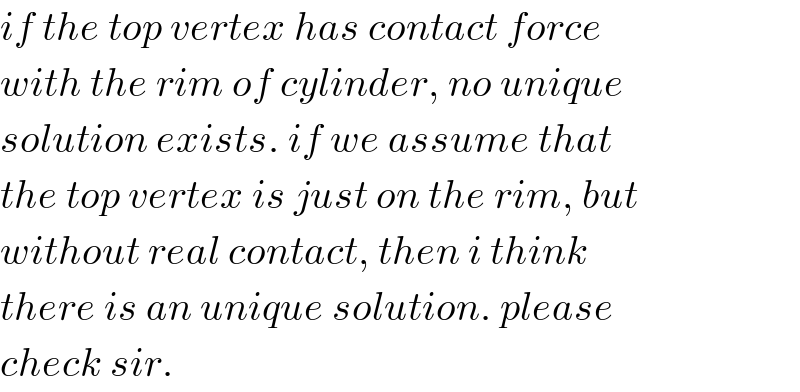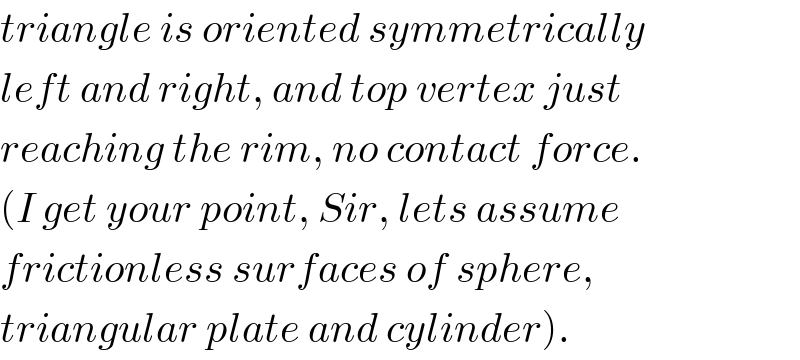
Question and Answers Forum
Question Number 126080 by ajfour last updated on 17/Dec/20

Commented by ajfour last updated on 18/Dec/20

Commented by mr W last updated on 17/Dec/20

Commented by ajfour last updated on 18/Dec/20

Answered by mr W last updated on 17/Dec/20

Commented by mr W last updated on 17/Dec/20
![s=side length of equilateral triangle B′=midpoint of BC D=center of mass of plate AB′=(((√3)s)/2) AD=(2/3)×(((√3)s)/2)=(((√3)s)/3) DB′=(1/3)×(((√3)s)/2)=(((√3)s)/6) h=r+r sin θ ⇒sin θ=(h/r)−1 2r=(((√3)s)/2)×sin θ+r−(√(r^2 −(s^2 /4))) ⇒(((√3)s)/2)×((h/r)−1)−r=(√(r^2 −(s^2 /4))) ⇒[3((h/r)−1)^2 +1]s=4(√3)((h/r)−1)r ⇒s=((4(√3)((h/r)−1)r)/(3((h/r)−1)^2 +1)) PD=SD×cos θ=DB′×cos^2 θ =(((√3)s)/6)[1−((h/r)−1)^2 ] AP=AD+PD=(((√3)s)/3)+(((√3)s)/6)[1−((h/r)−1)^2 ] =(((√3)s)/6)[3−((h/r)−1)^2 ] height of cylinder=H H=h+AP×cos θ ⇒H=h+(((√3)s)/6)[3−((h/r)−1)^2 ](√(1−((h/r)−1)^2 ))](Q126176.png)
Commented by ajfour last updated on 18/Dec/20

Commented by mr W last updated on 18/Dec/20

